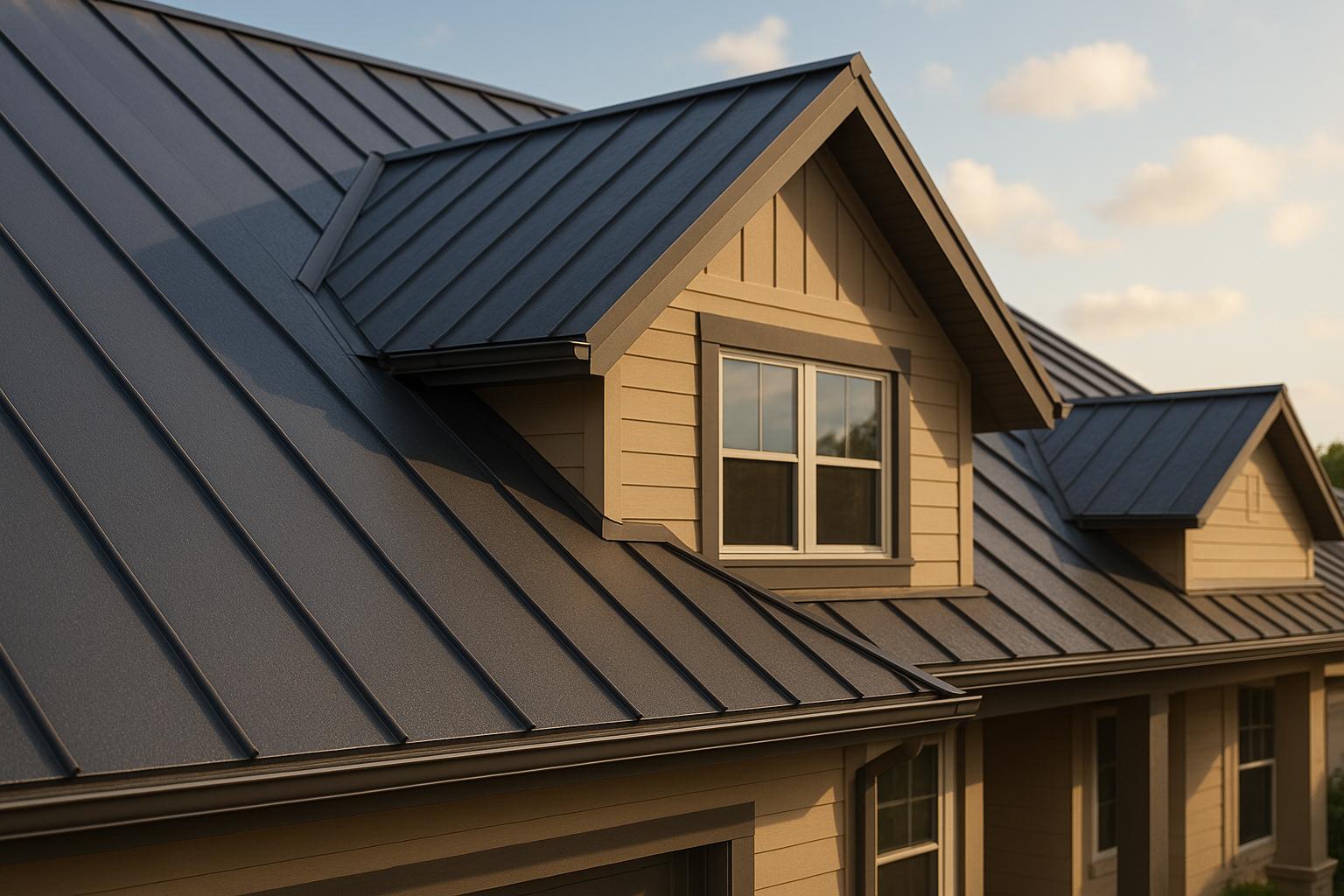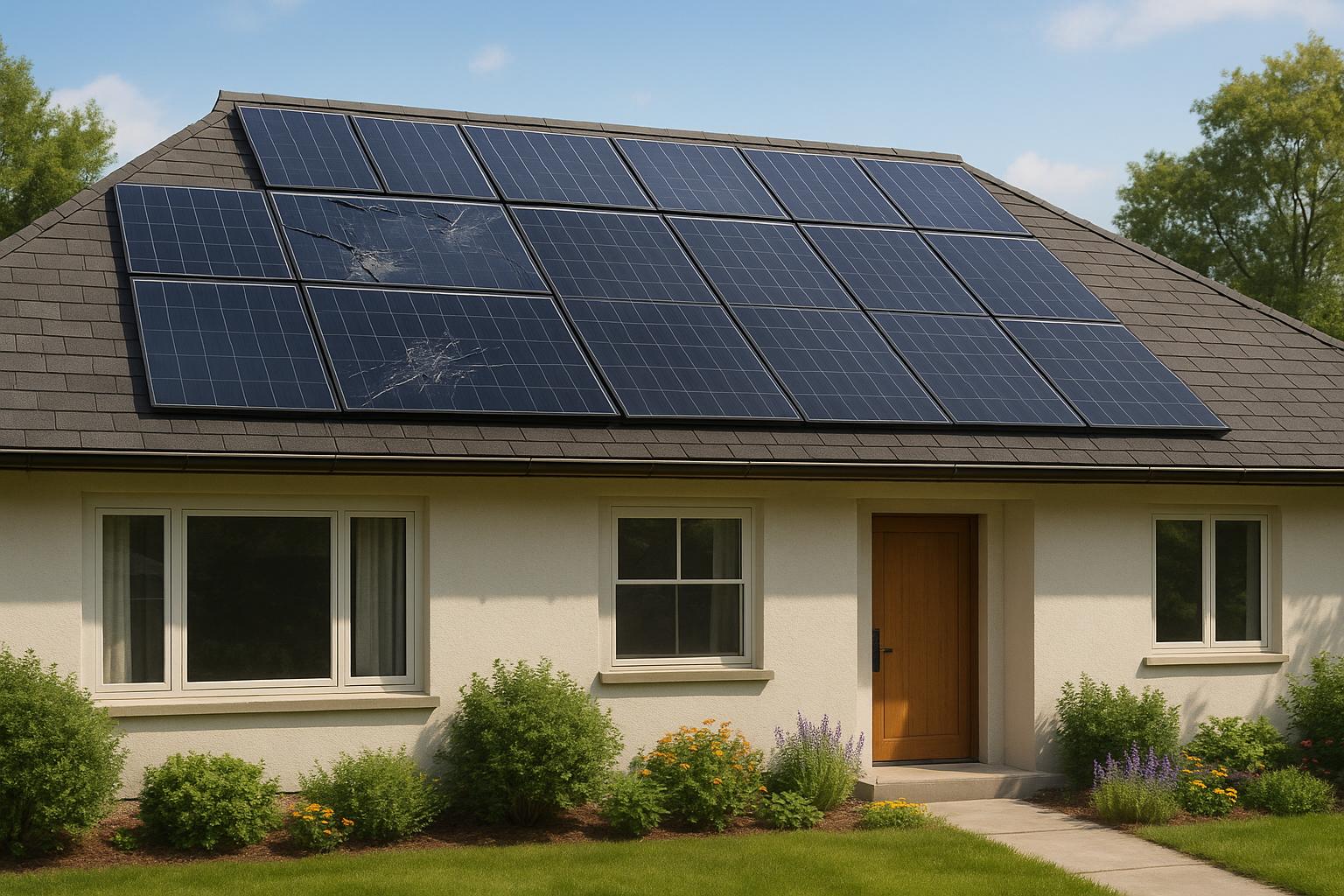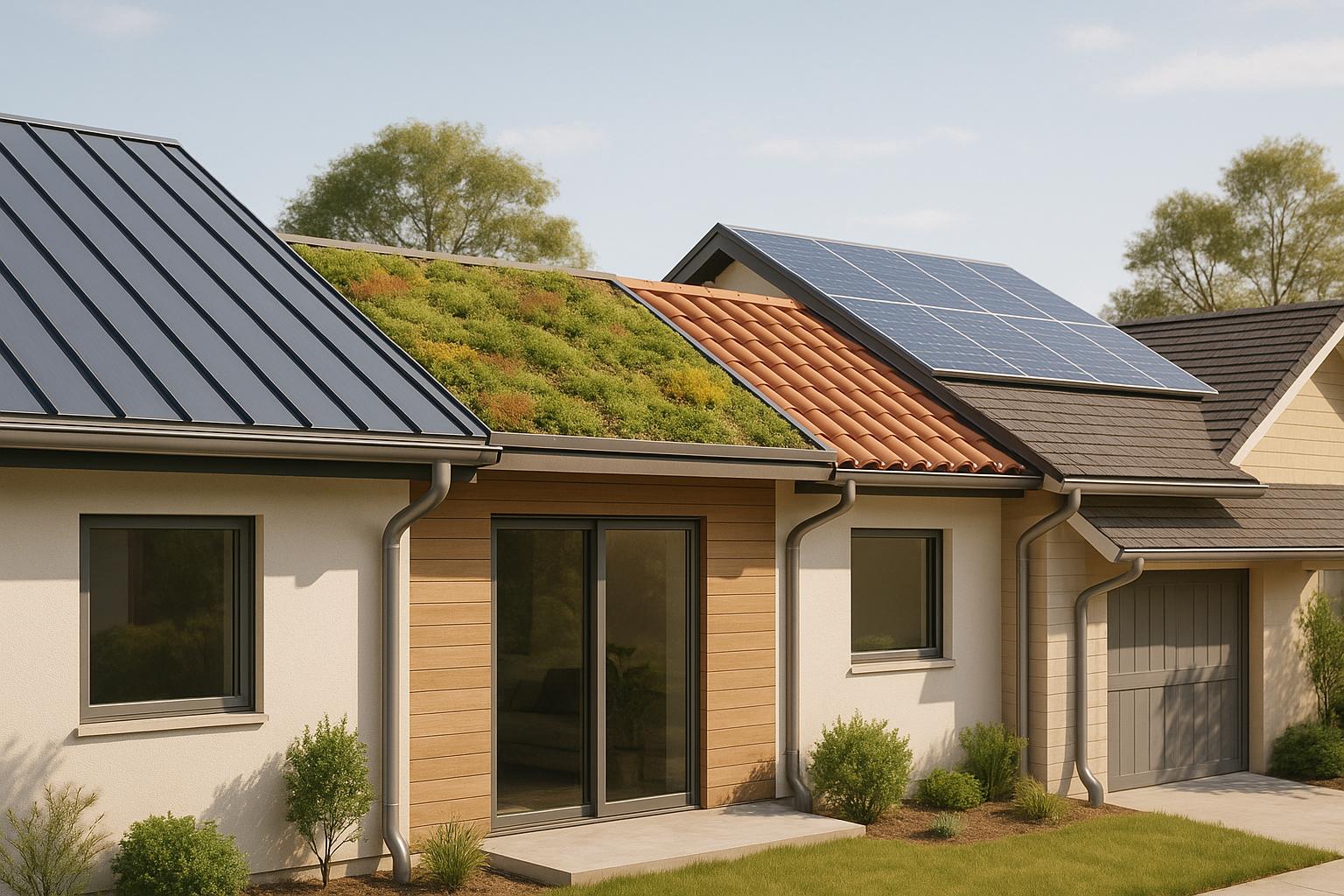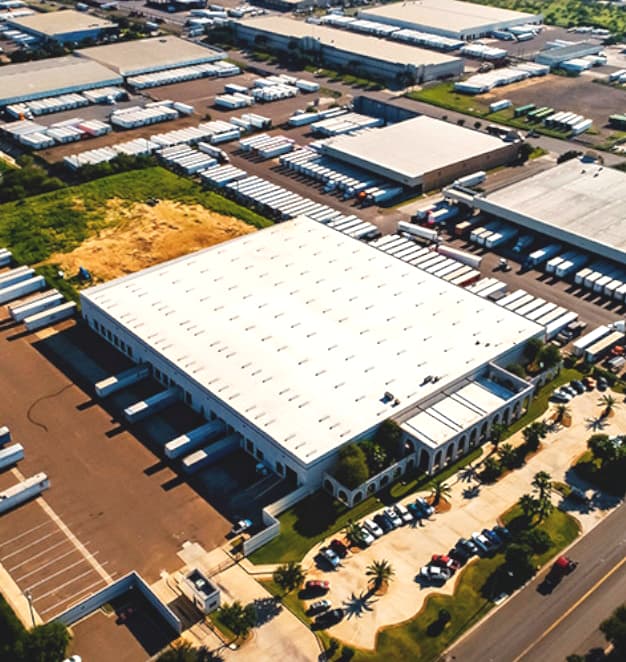Hail storms can cause expensive roof damage, but choosing the right hail-resistant material can save you money and protect your property. Here are the top 5 roofing materials for hail resistance, each designed to withstand severe weather:
- Class 4 Metal Roofing: Highly durable, lasts decades, reflects heat, and often made from recyclable materials. Costs more upfront but requires minimal maintenance.
- Synthetic and Rubber Shingles: Made from recycled materials, flexible to absorb impact, and eco-friendly. Lifespan of 40–50 years with lower repair costs.
- Malarkey Legacy Scotchgard Shingles: Combines rubber-modified asphalt with algae protection and smog-reducing granules. Durable and energy-efficient.
- GAF Timberline ArmorShield II Shingles: SBS-modified asphalt for flexibility, 30-year lifespan, and reflective granules for cooling.
- Impact-Resistant Asphalt Shingles: Affordable Class 4 option with reinforced fiberglass and rubberized asphalt. Lifespan of 25–30 years.
Quick Comparison
| Material | Impact Rating | Lifespan | Cost Range (per sq. ft.) | Key Features |
|---|---|---|---|---|
| Class 4 Metal Roofing | Class 4 | Decades | High ($$$) | Reflective, recyclable, low maintenance |
| Synthetic & Rubber Shingles | Class 4 | 40–50 years | $8.50–$15.00 | Flexible, eco-friendly, lower repair costs |
| Malarkey Legacy Shingles | Class 4 | 30–40 years | $6.75–$9.25 | Algae protection, smog-reducing granules |
| GAF Timberline ArmorShield II | Class 4 | 30 years | $1.20–$1.50 (per sq.) | Wind-resistant, ENERGY STAR certified |
| Impact-Resistant Asphalt | Class 4 | 25–30 years | $4.50–$6.50 | Affordable, reinforced fiberglass |
Choosing hail-resistant roofing protects your home, reduces repairs, and may lower insurance premiums. Consider your budget, climate, and long-term needs before deciding.
Hail Proof Roofing Shingles? Class 4 Hail Rating Explained
1. Class 4 Metal Roofing
Class 4 metal roofing is built to handle severe hailstorms with minimal damage. Its durability makes it a popular option for areas prone to extreme weather.
Impact Rating
Class 4 metal roofing earns the highest impact ratings in industry tests. These roofs are designed to resist dents and deformation during hailstorms, offering reliable protection.
Lifespan
With proper maintenance, Class 4 metal roofs can last for decades. They are built to endure harsh weather conditions without significant wear.
Costs and Upkeep
While the upfront cost is higher than other materials, Class 4 metal roofing requires minimal maintenance. Plus, homeowners may benefit from insurance discounts, making it a smart long-term investment.
Energy Efficiency and Sustainability
These roofs don’t just protect your home – they can also lower cooling costs. Their reflective surfaces reduce heat absorption, keeping indoor temperatures more manageable. Many Class 4 metal roofs are made with recyclable materials, aligning with eco-friendly practices.
For expert installation in Southern California, Prime American Roofing provides professional services to ensure your Class 4 metal roof performs at its best while maximizing energy savings.
Next, learn about synthetic and rubber shingles, which offer a mix of durability and design options.
2. Synthetic and Rubber Shingles
Synthetic and rubber shingles offer a tough, eco-conscious option for hail-resistant roofing by incorporating recycled materials for long-lasting protection.
Impact Rating
These shingles achieve the highest Class 4 impact rating under UL 2218 standards. This involves a test where a 2-inch steel ball is dropped from 20 feet, mimicking severe hail conditions. The use of recycled tire rubber in these shingles provides flexibility, allowing them to absorb impact energy more effectively than traditional roofing materials.
Lifespan
When installed and maintained correctly, synthetic and rubber shingles can last 40–50 years. For comparison, asphalt shingles often require replacement after 15–20 years. Prime American Roofing offers maintenance programs that include regular inspections and preventive care to help extend the lifespan of these roofs.
Costs and Upkeep
The initial installation cost for synthetic and rubber shingles typically ranges from $8.50 to $15.00 per square foot. Over a 20-year period, homeowners could save around 30% on repair costs. Additionally, many insurance providers offer premium discounts of 5–15% for homes with Class 4-rated roofs.
Environmental Benefits
These shingles also stand out for their eco-friendly qualities:
| Feature | Environmental Benefit |
|---|---|
| Recycled Content | Made from 70–95% recycled materials |
| Energy Efficiency | Can reduce cooling costs by up to 15% |
| End-of-Life | 90% of materials are recyclable |
| Air Quality | Equivalent to planting 2 trees per roof |
For instance, during Denver’s 2024 hailstorm, homes with Euroshield rubber shingles reported 0% penetration damage, while those with standard asphalt roofs experienced 22% damage.
In 2023, Prime American Roofing installed TPO rubber shingles on a commercial property in Riverside, CA. These shingles withstood golf ball–sized hail without damage. Regular upkeep, such as biannual inspections and gutter cleaning, helps maintain their performance over time.
Next, learn about Malarkey Legacy Scotchgard Shingles, another excellent hail-resistant choice.
3. Malarkey Legacy Scotchgard Shingles
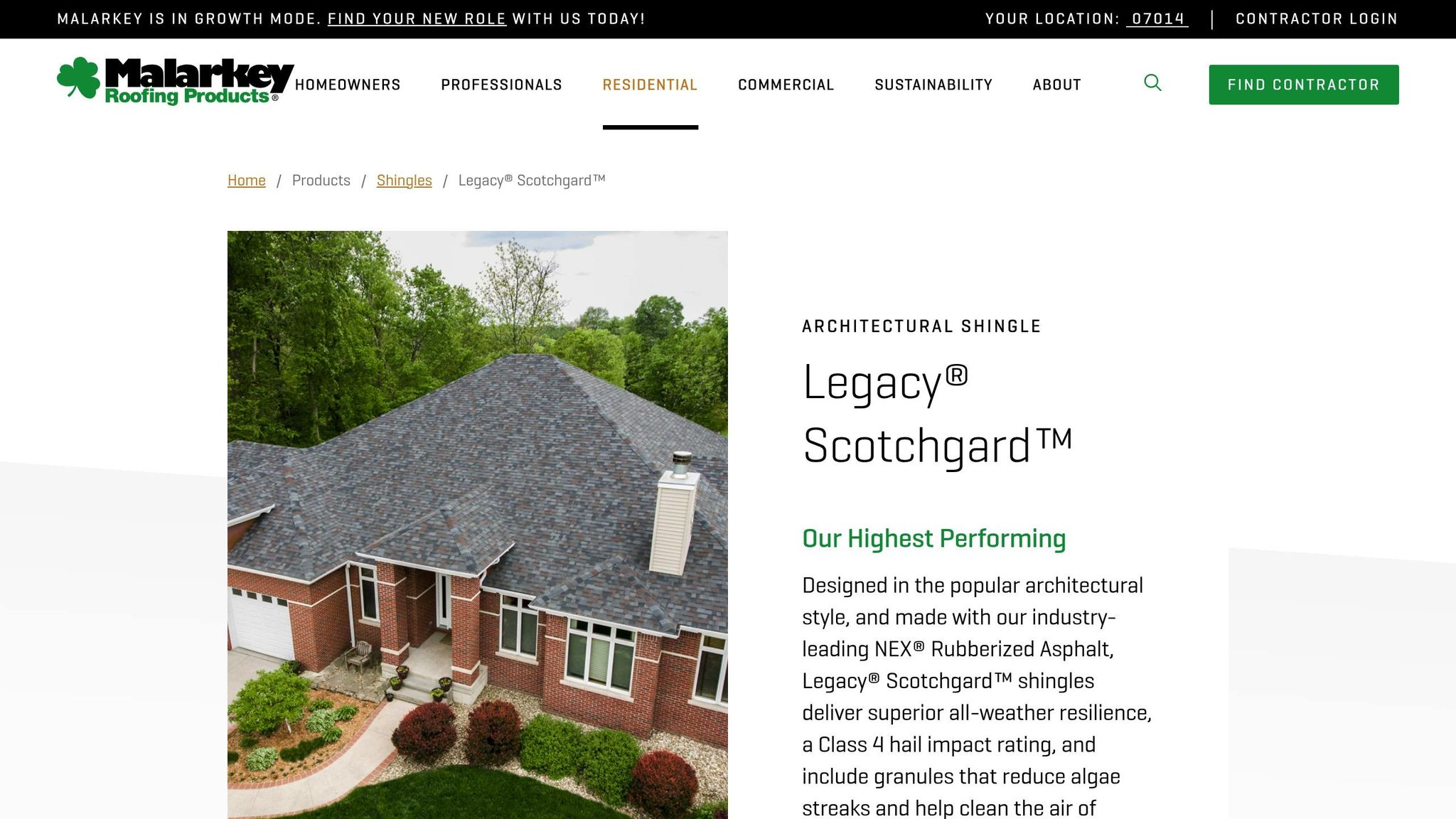
Malarkey Legacy Scotchgard Shingles combine NEX® polymer-modified asphalt with SBS rubber technology to offer strong protection against tough weather conditions.
Impact Rating
These shingles have a UL 2218 Class 4 rating. Thanks to SBS rubber-modified asphalt, they deliver 35% higher tear strength and 65% better granule adhesion. Prime American Roofing enhances their impact resistance by 30% with a six-nail installation method and ice-and-water underlayment.
Lifespan
| Feature | Specification |
|---|---|
| Expected Lifespan | 30–40 years |
| Material Warranty | 20-year non-prorated |
| Wind Resistance | Up to 130 mph |
| Algae Protection | 20-year Scotchgard warranty |
The "Smart Choice" warranty covers 100% material replacement for the first 15 years, outperforming many other products.
Costs and Upkeep
Material costs range between $4.50–$5.75 per square foot, with installation adding $2.25–$3.50 per square foot. For a 2,000-square-foot roof, this translates to a total cost of $13,500–$18,500 before any discounts. Scotchgard™ protection reduces maintenance needs by cutting cleaning frequency by about 40%. Instead of annual inspections, biennial checks are sufficient, and pressure washing is unnecessary to maintain the granule coating.
Green Features
Each roof installation incorporates six recycled rubber tires and 4,000 plastic bags. A standout example is the Montana Mountain Home project completed in 2024 by Dennis General Contractors. This 110-square installation recycled 22 tires and 14,700 plastic bags, earning the ARMA Gold Excellence in Asphalt Roofing Award.
Additionally, smog-reducing granules provide 25% solar reflectance, surpassing ENERGY STAR® standards. This feature can help lower cooling costs by 8–12%.
sbb-itb-d1d6490
4. GAF Timberline ArmorShield II Shingles
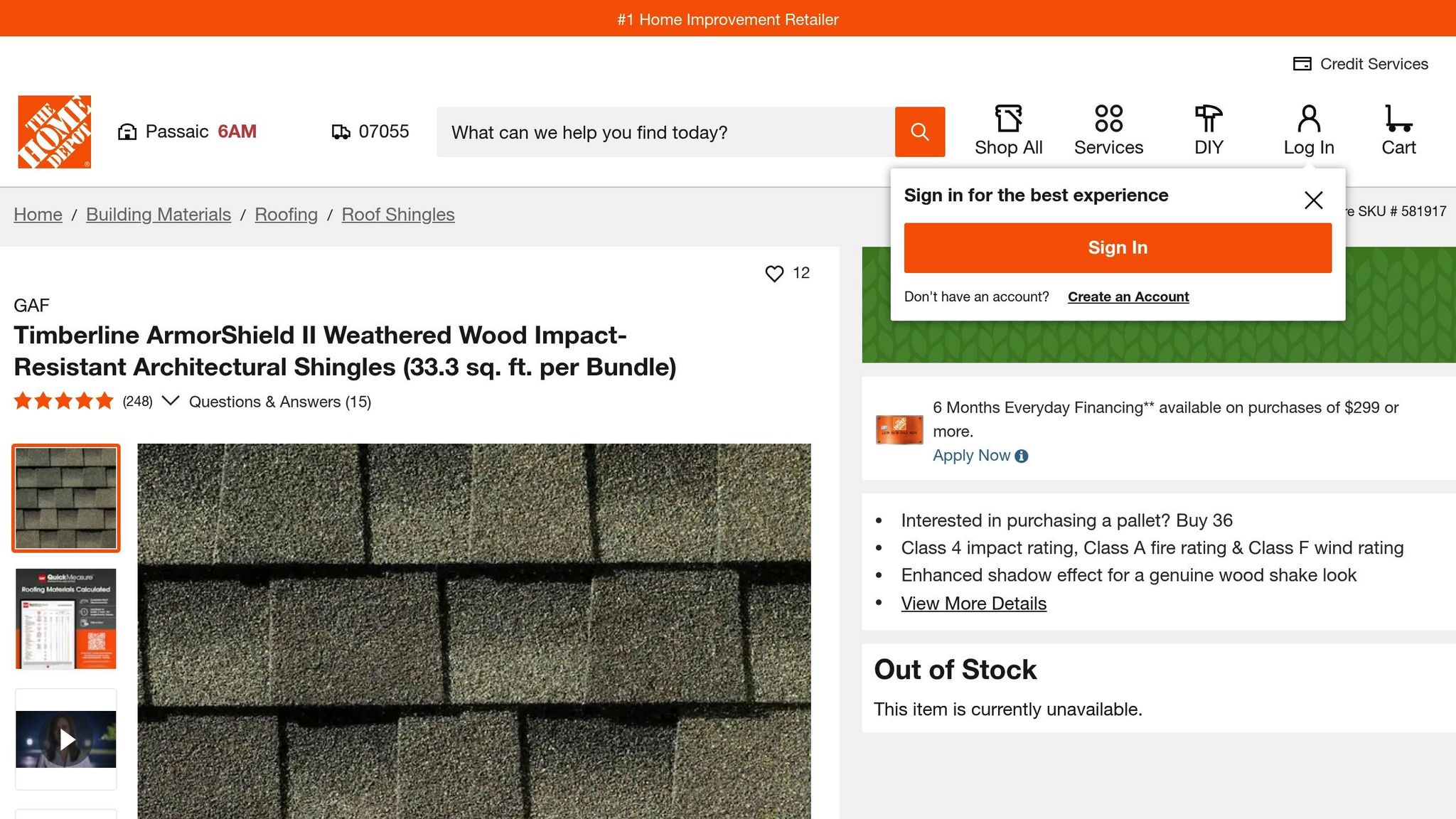
Impact Rating
The GAF Timberline ArmorShield II shingles come with a UL 2218 Class 4 impact resistance rating. According to field studies, 95% of these shingles hold up under severe weather conditions. They’re designed to withstand impacts from a 2-inch steel ball dropped from 20 feet, simulating hailstones as large as 2.5 inches.
Lifespan
These shingles are built to last, boasting a 30-year lifespan. Key specifications include:
| Feature | Specification |
|---|---|
| Temperature Tolerance | -40°F to 150°F |
| Wind Resistance | Up to 130 mph |
| Algae Protection | 15-year StainGuard Plus warranty |
| Material Warranty | 50-year limited coverage |
| Wind Warranty | 10-year protection |
Their SBS-modified asphalt ensures flexibility in extreme temperatures, while LayerLock technology provides added wind resistance.
Costs and Upkeep
Expect material and installation costs to range from $120 to $150 per square (100 sq. ft.). This upfront investment may reduce insurance premiums due to the shingles’ Class 4 rating.
For upkeep, plan for biannual inspections to check for granule loss, repair any cracks over 1 inch, and keep gutters clean to prevent water buildup.
Green Features
These shingles incorporate 30% post-industrial recycled materials and are 90% recyclable through GAF’s recycling program. Their reflective granules, which contribute to ENERGY STAR certification, can reduce attic temperatures by 10–15°F, leading to cooling cost savings of 5–12% in warmer climates.
The StainGuard Plus technology, with copper-based protection, prevents algae growth and helps maintain the roof’s appearance.
In Southern California, Prime American Roofing installs these shingles to provide reliable protection from hail and UV damage.
5. Impact-Resistant Asphalt Shingles
Impact Rating
Impact-resistant asphalt shingles are rated UL 2218 Class 4, meaning they can handle severe hail impacts. These shingles endure strikes from 2-inch steel balls traveling at speeds up to 90 mph without cracking or splitting. According to the Insurance Institute for Business & Home Safety, roofs with Class 4 shingles experience up to 40% fewer hail damage claims compared to standard roofing materials.
Lifespan
With regular maintenance, these shingles can last 25–30 years, offering greater longevity than traditional asphalt options. Their durability comes from several key components:
| Component | Benefit |
|---|---|
| Reinforced Fiberglass Mat | Adds structural strength |
| Rubberized Asphalt | Absorbs impact effectively |
| Algae-Resistant Granules | Maintains appearance over time |
Costs and Maintenance
Installing impact-resistant shingles costs between $4.50 and $6.50 per square foot, which is about 15–20% more expensive than standard asphalt shingles. However, homeowners may offset this higher upfront cost through insurance premium discounts of 5–15% in 38 states where such incentives are mandated.
Maintenance tips include:
- Inspect twice yearly for granule loss (replace if more than 10% is gone)
- Check for storm damage and clean gutters regularly
- Repair cracks over 1 inch promptly
Environmental Benefits
These shingles also come with eco-friendly perks. For example, Atlas Pinnacle® Impact shingles help keep about 5 tires and 3,200 plastic bags out of landfills with each roof installation. Additionally, 3M™ Smog-Reducing Granules can neutralize nitrogen oxide emissions equivalent to the annual output of two cars.
Prime American Roofing in Southern California combines these environmental benefits with excellent hail protection. Their reflective granule technology can lower attic temperatures by up to 20°F, potentially reducing cooling costs by 10–15%. This wraps up our look at the top hail-resistant roofing materials.
Conclusion
Opt for hail-resistant roofing to protect your property from harsh weather. The materials mentioned offer different levels of protection and durability, making it easier to find an option that fits your budget.
When choosing a material, consider factors like your area’s weather conditions, how often hail occurs, and overall cost. A professional evaluation can help determine the best option for your specific climate.
Working with experts for both assessment and installation ensures your roof is built to last. The right combination of skilled professionals and quality materials provides reliable protection for your home.
In Southern California, regular roof inspections are crucial for maintaining performance. Scheduling annual maintenance checks can extend your roof’s lifespan and keep it functioning effectively. While the upfront cost of hail-resistant materials may be higher, they can save you money in the long run by reducing the need for frequent repairs.
Your roof is your property’s first line of defense against severe weather. By combining durable materials with professional installation, you can ensure long-term protection tailored to your local climate and budget.
FAQs
What should I think about when selecting hail-resistant roofing materials?
When choosing hail-resistant roofing materials, it’s important to evaluate durability, cost, and how well the material suits your property’s specific needs. Consider factors like the severity of hailstorms in your area, the lifespan of the material, and its ability to withstand impact damage. Some popular options include metal roofing, impact-resistant shingles, and concrete or clay tiles.
If you’re in Southern California, working with professionals who understand the local climate can make a big difference. Prime American Roofing provides expert guidance and high-quality roofing solutions tailored to ensure your roof is built to last.
What should I know about insurance discounts for hail-resistant roofing?
Many insurance companies offer discounts on premiums for homes equipped with hail-resistant roofing materials, as these materials reduce the risk of damage during severe weather. To qualify, your roof typically needs to meet specific impact-resistance standards, often certified by organizations like UL (Underwriters Laboratories).
Before applying for a discount, check with your insurance provider to understand their requirements. They may ask for documentation, such as proof of installation or the material’s impact-resistance rating. Investing in a durable, hail-resistant roof not only protects your home but can also lead to long-term savings on insurance costs.
What maintenance steps can help extend the lifespan of hail-resistant roofing materials?
To maximize the durability of hail-resistant roofing materials, regular maintenance is key. Schedule a professional roof inspection at least once a year to identify and address any potential issues early. After severe weather events, such as hailstorms, it’s also a good idea to check for damage and make necessary repairs promptly.
Keeping your roof clean by removing debris, such as leaves and branches, can prevent moisture buildup and reduce the risk of damage over time. Additionally, ensure your gutters are clear to allow proper drainage and prevent water from pooling near your roof.

